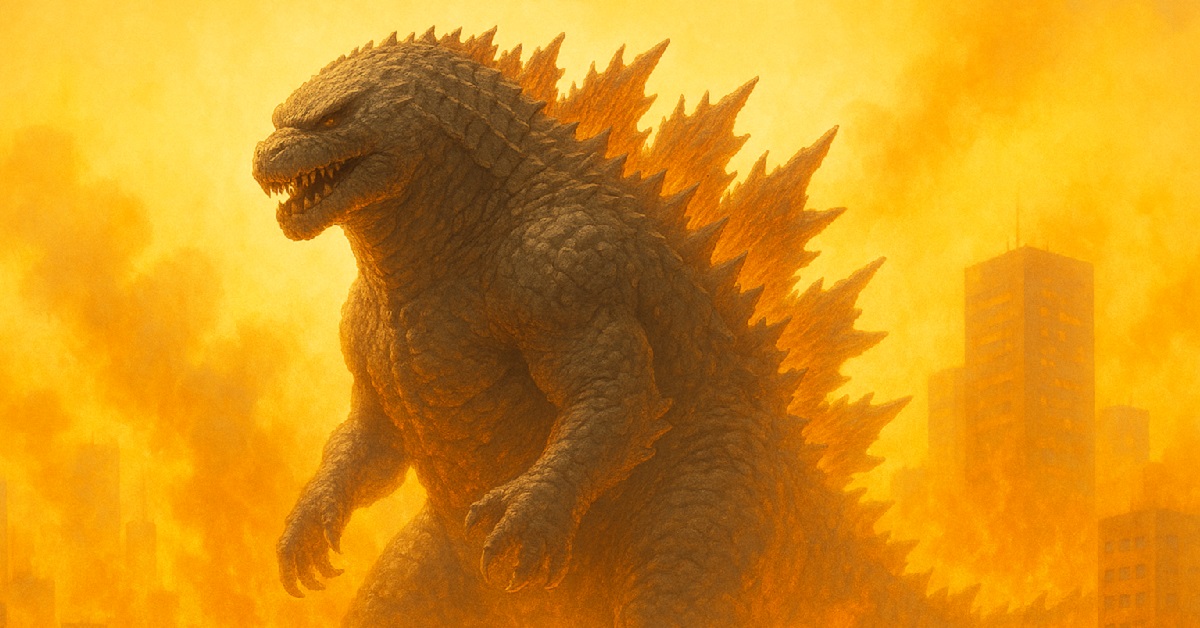Godzilla is not just a monster in Japanese cinema; he is a symbolic figure deeply connected to the nation’s history, culture, and collective memory. Over the decades, Godzilla has evolved from a terrifying destroyer to a cultural ambassador, reflecting societal concerns and emotional shifts across generations.
The Origins of Godzilla and Its Role in Postwar Japan
The first Godzilla film, released in 1954, emerged as a symbolic expression of postwar anxiety and trauma. Against a backdrop of nuclear testing and radiation fears, Godzilla was conceived as a metaphor for nuclear weapons, warning humanity about the dangers of uncontrolled scientific ambition. Far from being just a monster film, it was embraced as a work sounding a societal alarm.
Special effects were used to vividly portray urban destruction, leaving a deep impact on audiences. Over time, Godzilla grew to become a central figure in Japanese pop culture, continually updating its themes in response to social changes.
| Element | Details |
|---|---|
| First Appearance | 1954 |
| Initial Theme | Fear of nuclear weapons, warning against science |
| Social Context | Postwar reconstruction, radiation anxiety |
| Technical Feature | Realistic destruction scenes using special effects |
Changing Perceptions Across Generations
Godzilla’s image has significantly changed across generations. For those who grew up in the Showa era, Godzilla was a figure of fear, embodying memories of war and atomic devastation. However, during the Heisei period, the focus shifted toward entertainment and heroic battles, making Godzilla more accessible to younger audiences. In the Reiwa era, films have once again integrated social commentary, with realism becoming a new standard of evaluation.
| Generation | Main Image of Godzilla | Evaluation Focus |
|---|---|---|
| Showa | Nuclear threat, war, destruction | Social criticism, antiwar |
| Heisei | Hero, battles, entertainment | Fun factor, fantasy world |
| Reiwa | Political satire, realism | Political themes, social lens |
This evolving perception reflects how Godzilla adapts to Japanese values over time.
Godzilla as a National Character
Today, Godzilla serves as a symbol of national identity. Beyond cinema, it is used in tourism campaigns, product branding, and even regional revitalization efforts. In 2015, Godzilla was designated an honorary citizen in Shinjuku, Tokyo, reinforcing its connection to the community.
Regional governments and businesses have used Godzilla in marketing to revitalize local areas. The following table summarizes Godzilla’s use across various fields in Japan:
| Field | Examples |
|---|---|
| Tourism | Godzilla Head in Shinjuku, film location tours |
| Merchandise | Figures, apparel, branded beverages |
| Public Campaigns | Disaster awareness with fire and weather agencies |
| Local Promotion | Travel campaigns and mascots in regional areas |
In these roles, Godzilla transcends its monster roots to act as a cultural ambassador for Japan.
Critical and Audience Perspectives on Godzilla Films
Recent Godzilla films, particularly “Shin Godzilla”, have been critically acclaimed for their political satire and disaster realism. Critics praise their thoughtful narratives, while audiences appreciate the films’ mix of excitement and depth. Technologically, modern Godzilla films blend traditional special effects with CGI, achieving world-class visual impact.
Today’s audience is broad and diverse, ranging from families to seniors. Below is a summary of key evaluation points for recent Godzilla films:
| Evaluation Aspect | Description |
|---|---|
| Social Themes | Disaster response, political criticism |
| Visuals | Evolution of special effects and CGI |
| Storytelling | Detailed plots, realistic character portrayals |
| Character Appeal | Godzilla’s presence and enemy dynamics |
These elements elevate Godzilla films beyond genre works, positioning them as reflections of contemporary Japanese society.
Future Evolution and Japan’s Vision for Godzilla
Godzilla continues to evolve, with applications expanding into education, science events, and youth-targeted content. Animated series and cross-brand collaborations are reaching new audiences. International co-productions are on the rise, but domestic fans still place strong value on Japan-produced Godzilla stories.
| Area | Expected Development |
|---|---|
| Education | Used for science, disaster, and environment lessons |
| Animation | TV series and online streaming |
| International | Co-productions with Hollywood |
| Community Events | Collaborative local activities with schools |
Going forward, Godzilla will continue to serve as a living tradition, reflecting the evolving spirit of Japan.
Conclusion
Godzilla is a character that has changed with Japan’s social and cultural climate. From the fear of Showa, to the entertainment of Heisei, and the satire of Reiwa, its meaning has constantly evolved. Godzilla will likely continue to be embraced by new generations and serve as a symbol of Japanese identity for years to come.






